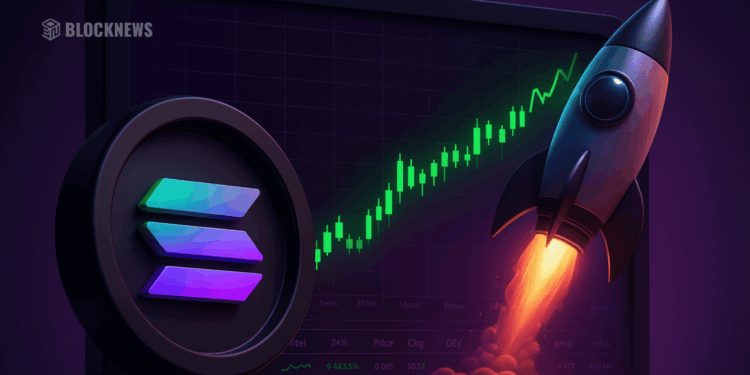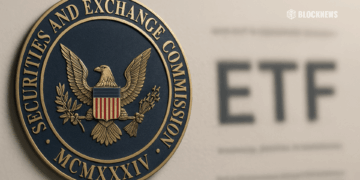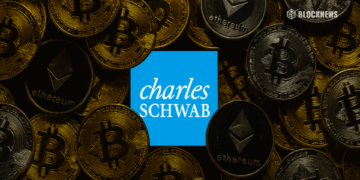- Solana has rebounded from $8 to $200, driven by technical upgrades, memecoin adoption, and growing institutional interest.
- The ecosystem is expanding into NFTs, DeFi, payments, tokenized assets, and gaming, solidifying Solana’s position as a leading Layer-1.
- A path to $2,000 per SOL is possible with ETF approvals, enterprise integration, and sustained dominance in high-speed blockchain applications.
Solana has emerged as one of the most closely watched blockchains in recent years, transitioning from the label of “Ethereum killer” to a leading ecosystem in its own right. Known for lightning-fast transaction speeds, low fees, and an expanding network of applications, Solana has firmly established itself as a serious competitor in the Layer-1 space.
After falling to a low of approximately $8 during the depths of the bear market, Solana has rebounded sharply, trading around the $200 mark in 2025. With such a remarkable recovery, the question now facing investors is whether the major gains are behind us—or whether Solana has the potential to climb to $2,000 and beyond.
This analysis explores Solana’s fundamentals, its ecosystem growth, and the catalysts that could determine whether another 10x move is within reach.
Understanding Solana’s Core Technology
Solana was designed as a high-performance blockchain capable of delivering scalability without sacrificing decentralization or security. Its most notable innovation, Proof of History (PoH), timestamps transactions before processing, creating a more efficient system that supports thousands of transactions per second at a fraction of a cent in fees.
This capability has positioned Solana as a prime platform for decentralized finance (DeFi), non-fungible tokens (NFTs), gaming, and most recently, the rapidly growing memecoin sector. Developers are attracted by its efficiency and low costs, while users benefit from near-instant transaction confirmations.
The network’s ecosystem now includes:
- Magic Eden – a leading NFT marketplace,
- Raydium and Jupiter – popular DeFi platforms,
- Memecoins such as BONK, WIF, and MEW – which have significantly boosted transaction activity.
Additionally, the user experience has improved with wallets like Phantom, which streamline onboarding and support mainstream adoption. Together, these developments explain why Solana continues to be compared directly to Ethereum as one of the premier blockchain platforms.
Solana’s Path from Launch to Today
Founded in 2017 by Anatoly Yakovenko, Solana officially launched its mainnet in 2020 with a mission to address the speed and scalability challenges plaguing existing blockchains. The network quickly attracted attention during the NFT boom of 2021, when trading volumes surged and $SOL’s price climbed to an all-time high of approximately $260.
However, challenges soon followed. Network outages in 2022 and the collapse of FTX—one of Solana’s key backers—drove sentiment sharply lower, sending SOL down to around $8. Many observers doubted its ability to recover.
Despite this, the Solana community and development teams remained committed. By 2023, significant upgrades had stabilized the network, and momentum returned as new applications, especially in memecoins and NFTs, began attracting users once again. By 2025, Solana’s strong recovery has positioned it as one of the leading contenders in the blockchain sector.
From $8 to $200: How Solana Rebuilt
Solana’s resurgence has been driven by three major factors:
- Technical Stability – Updates have reduced downtime, improved validator efficiency, and increased throughput, enabling the chain to handle high transaction volumes consistently.
- Retail Participation – The memecoin boom on Solana turned into a major on-ramp for millions of new users. Low fees and fast transactions created a fertile environment for speculative activity, which in turn boosted ecosystem engagement.
- Institutional and Commercial Adoption – Partnerships with firms such as Shopify for crypto payments and initiatives involving tokenized real-world assets have given Solana credibility beyond retail speculation.
This combination of retail energy, technical resilience, and institutional interest fueled a price recovery that lifted $SOL back to $200.
The Road Ahead: Growth Drivers and Ecosystem Expansion
Looking forward, Solana’s strategy is focused on scaling its strengths:
- Performance Enhancements: Continuous improvements to network speed and latency aim to make Solana an increasingly attractive platform for high-volume applications.
- Ecosystem Development: New tools and grant programs encourage developers to launch projects, particularly in DeFi, NFTs, and consumer applications.
- Enterprise Integration: Solana is expanding into e-commerce, tokenized assets, and payments, further diversifying its use cases.
- Emerging Sectors: The network is positioning itself for growth in gaming and AI-related applications, where low-cost, high-speed settlement is critical.
Each of these initiatives contributes to a broader roadmap that could support further growth in adoption and valuation.
The $2,000 Question: Is Another 10x Move Feasible?
At current levels, a move to $2,000 per $SOL would imply a market capitalization rivaling or surpassing Ethereum’s present valuation. While ambitious, such a scenario cannot be dismissed outright given crypto’s history of exponential growth during strong bull cycles.
Key potential catalysts include:
- An altcoin season with liquidity flowing into high-beta assets,
- Approval of a Solana ETF, which could bring significant institutional inflows,
- Sustained dominance in NFT and memecoin markets,
- Expansion into tokenized real-world assets and broader enterprise adoption.
These factors combined could create the conditions for a parabolic rally. However, risks remain—network reliability must continue to hold, macroeconomic conditions must remain favorable, and competition from Ethereum and other chains could slow Solana’s ascent.
Ethereum Comparison: Competitor or Complement?
The “Ethereum killer” narrative persists, but the more realistic scenario is coexistence. Ethereum maintains first-mover advantages, deep liquidity, and extensive institutional trust. Solana, by contrast, offers unmatched speed and cost efficiency, which makes it a preferred environment for certain high-frequency use cases.
Rather than displacing Ethereum, Solana is carving out a distinct role in the blockchain landscape, much like how Apple and Microsoft coexist as technology leaders serving overlapping yet different markets.
Final Takeaways
Solana has matured from a volatile experiment into one of the leading blockchains, with robust ecosystem activity, growing institutional interest, and a clear technological advantage in speed and cost. The rebound from $8 to $200 underscores investor confidence, but the possibility of $2,000 per $SOL depends on a mix of market dynamics, institutional adoption, and network execution.
While ambitious, the scenario is within reach under the right conditions. For investors, Solana represents both high risk and high potential reward—one of the few assets in the space with the fundamentals and community support to deliver outsized returns if market momentum accelerates.














